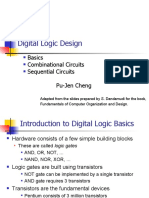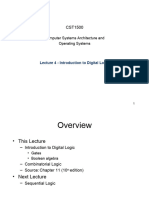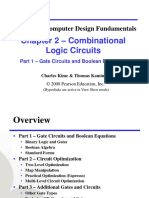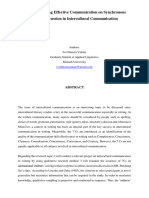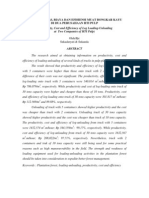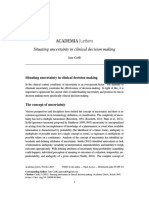0% found this document useful (0 votes)
18 views21 pagesL 05 Boolean Logic
Lecture 5 covers Boolean logic and combinational logic, including basic operations, laws, and gate delays. It discusses methods for simplifying logic functions, such as canonical forms and Karnaugh maps, as well as the implementation of combinatorial logic using Programmable Logic Arrays. Additionally, it addresses concepts like wire bundles, decoders, multiplexers, and the impact of gate delays on circuit performance.
Uploaded by
princechowdhury023Copyright
© © All Rights Reserved
We take content rights seriously. If you suspect this is your content, claim it here.
Available Formats
Download as PDF, TXT or read online on Scribd
0% found this document useful (0 votes)
18 views21 pagesL 05 Boolean Logic
Lecture 5 covers Boolean logic and combinational logic, including basic operations, laws, and gate delays. It discusses methods for simplifying logic functions, such as canonical forms and Karnaugh maps, as well as the implementation of combinatorial logic using Programmable Logic Arrays. Additionally, it addresses concepts like wire bundles, decoders, multiplexers, and the impact of gate delays on circuit performance.
Uploaded by
princechowdhury023Copyright
© © All Rights Reserved
We take content rights seriously. If you suspect this is your content, claim it here.
Available Formats
Download as PDF, TXT or read online on Scribd
/ 21

















